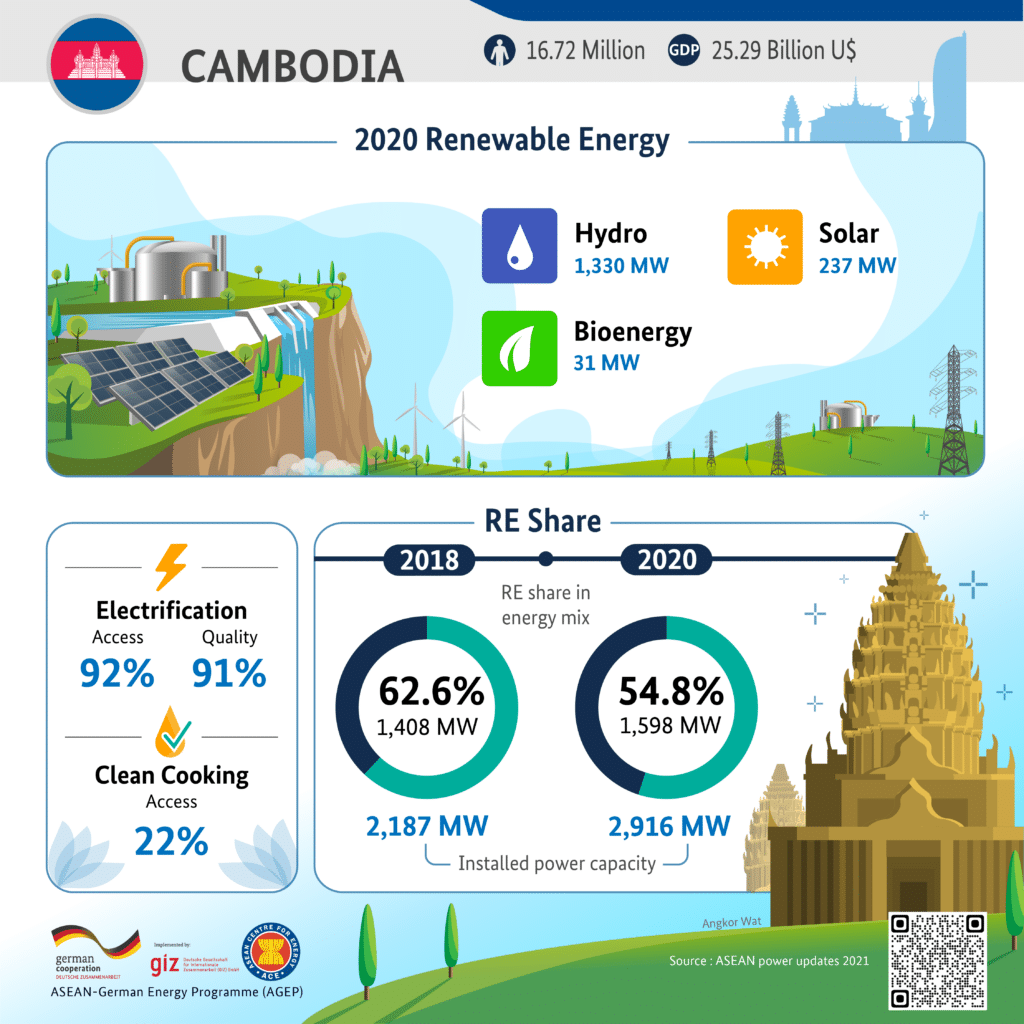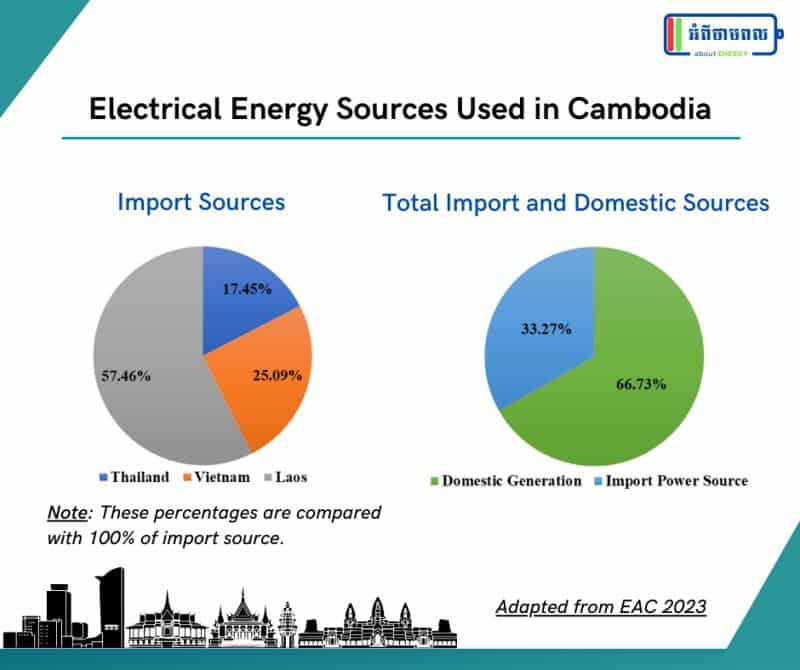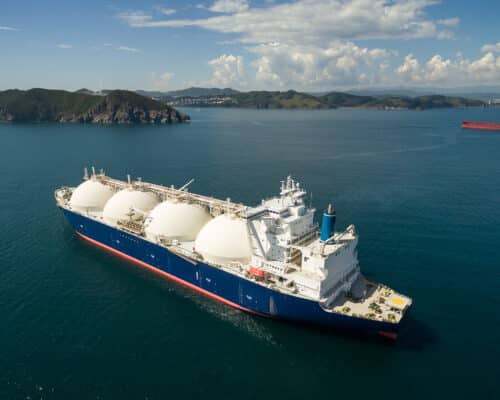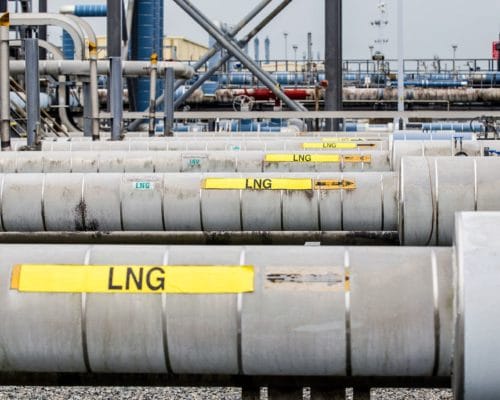Electricity in Cambodia: Quality and Price Issues
Source: Litails
27 March 2024 – by Eric Koons Comments (0)
Electricity in Cambodia is at a crucial juncture as the nation aims to increase electrification rates and modernise its grid within the regional energy landscape. Despite having Southeast Asia’s second lowest electrification rates, Cambodia aims to drastically scale up its renewable energy capacity to reach 70% by 2030.
However, the feasibility of this plan remains to be seen, as the country recently missed its 2020 goal of providing electricity to 100% of its citizens. This failure highlights the lack of reliable electricity infrastructure in the country and its national grid that does not reach many rural villages.

Improving the energy grid and power sector is one of the major hurdles the country must overcome to improve its energy security, accessibility and efficiency.
The Current Electricity System in Cambodia
While the existing grid is lacking, Cambodia’s electricity system has significantly transformed over the last decade. Domestic energy production has been increasing at a rate of 8% per year since 2010. However, the country’s simultaneous rapid economic growth has created a power supply gap, primarily filled with imported electricity.
Additionally, the nation’s grid is outdated and faces energy quality and reliability challenges. Surges of electricity voltage in the grid cause damage to appliances and machinery for residential and industrial users.
In response, the Cambodian government has plans to expand and modernise the grid with new power generation projects. This expansion aims to enhance high-voltage transmission capabilities, with projected costs reaching USD 1.8 billion. Such developments are critical for safeguarding energy security and achieving universal electricity access, addressing the present inadequacies and future demands.
Sources of Cambodia’s Electricity – Renewable Energy, Solar Power and Hydropower
The composition of Cambodia’s electricity supply is a blend of domestic production and international imports. In 2022, over 25% of the country’s energy was imported from Thailand, Laos and Vietnam.

Due to the country’s high reliance on hydropower, power demand typically outstrips domestic supply during the dry season. The primary sources of these energy imports are coal, oil and gas. In 2021, the country imported USD 222 million worth of coal and 100% of its oil and natural gas.
This reliance on imports poses challenges in terms of sustainability and affects the country’s energy autonomy. The country’s move towards domestic renewable energy sources is a strategic approach to improve its energy security and electricity sector and reach long-term emissions goals.
Cambodia Electricity Price
The high electricity cost for consumers results from the quantity of imported energy and the outdated energy grid. Electricity prices in Cambodia are among the highest in the region, topping USD 0.137 per kWh. This is considerably more than neighbouring countries.
The price of electricity in Cambodia not only impacts the competitiveness of Cambodian industries but also limits access to reliable power for a significant segment of the population. With 17.8% of the population living below the poverty line, many will struggle to see an improved economic outlook without cheap, reliable electricity access. This is particularly relevant for rural regions, which house most of the poor population and have the least electricity access.
Pathways to Increased Electrification and Reduced Prices
Enhancing electrification rates and reducing electricity costs in Cambodia requires a multi-pronged strategy. First, Cambodia’s existing electricity demand and supply gap need to shrink. One of the main ways the country can achieve this is to reduce the rapidly increasing demand for energy. The country’s National Energy Efficiency Policy 2022-2030 aims to decrease Cambodia’s final electricity consumption by 19% in 2030. A core component of this plan focuses on improving energy efficiency – both during electricity generation and for end users.
Second, the country needs to develop robust policies to stabilise the price of electricity in Cambodia. This can come in both the form of subsidies for end users and generation facilities.
Finally, developing a more robust, modernised energy grid that taps into the country’s large renewable energy resources will stabilise the grid, lower production costs and bolster energy security. For example, solar energy in Cambodia is cheaper to produce than most other alternatives, yet the solar energy market is largely untapped.
Combined, these strategies target the existing cost problem and present long-term solutions to ensure the country’s energy system grows sustainably. Increasing the domestic generation capacity and transmission infrastructure will help the country reduce its reliance on foreign imports and strengthen its energy security.
by Eric Koons
Eric is a passionate environmental advocate that believes renewable energy is a key piece in meeting the world’s growing energy demands. He received an environmental science degree from the University of California and has worked to promote environmentally and socially sustainable practices since. Eric’s expertise extends across the environmental field, yet he maintains a strong focus on renewable energy. His work has been featured by leading environmental organizations, such as World Resources Institute and Hitachi ABB Power Grids.
Read more





